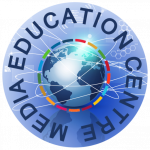
Formal education – Organized, guided by a formal curriculum, leads to a formally recognized credential such as a high school completion diploma or a degree, and is often guided and recognized by government at some level. Teachers are usually trained as professionals in some way.
Non-formal learning – Organized (even if it is only loosely organized), may or may not be guided by a formal curriculum. This type of education may be led by a qualified teacher or by a leader with more experience. Though it doesn’t result in a formal degree or diploma, non-formal education is highly enriching and builds an individual’s skills and capacities. Continuing education courses are an example for adults. Girl guides and boy scouts are an example for children. It is often buying levaquin considered more engaging, as the learner’s interest is a driving force behind their participation.
Informal learning – No formal curriculum and no credits earned. The teacher is simply someone with more experience such as a parent, grandparent or a friend. A father teaching his child to play catch or a babysitter teaching a child their ABC’s is an example of informal education.
These may be overly simplified explanations. There are times when the lines between each type of learning get blurred, as well. It isn’t always as cut and dry as it seems, but these definitions give you a general idea of each type of learning.


